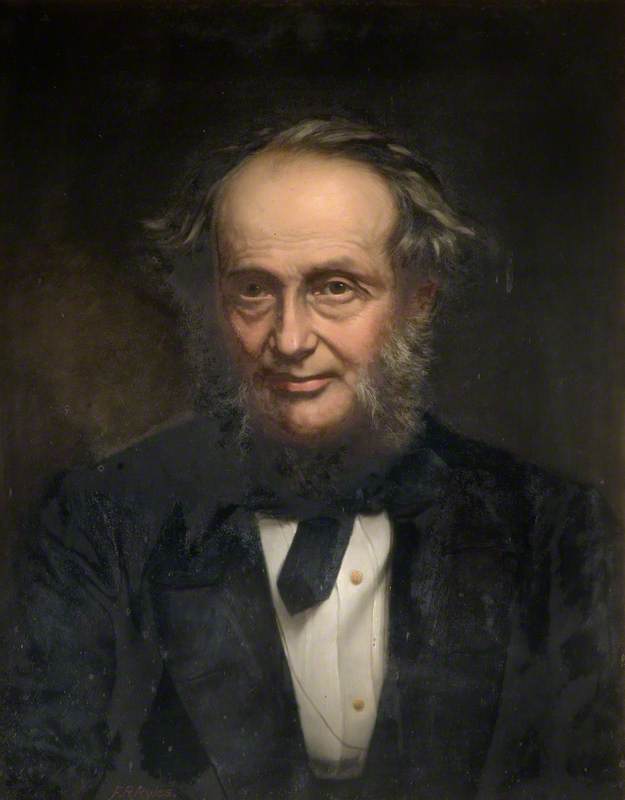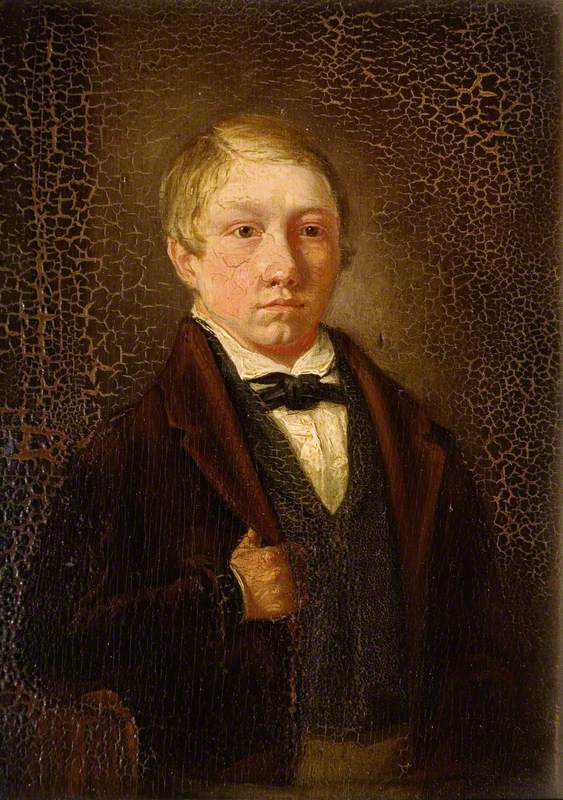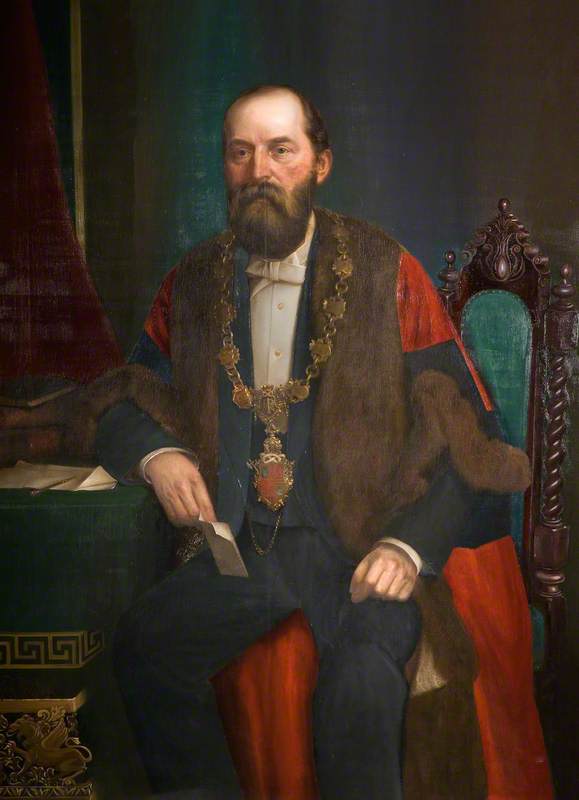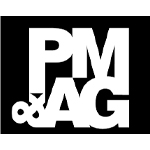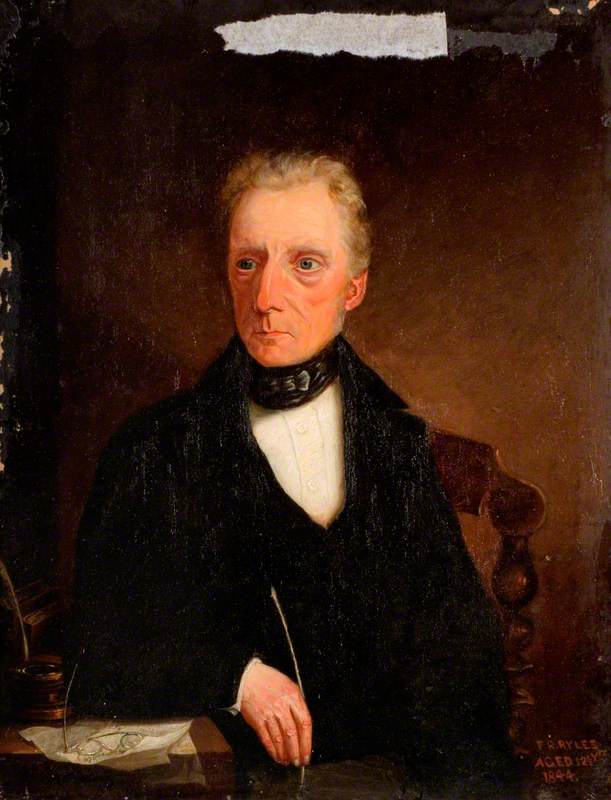
The 1841 census shows that Ryles was fifth child and second son of five in the (at least) ten children of George Ryles and his wife Ellen (née Turner), who married in Stoke-on-Trent on 5th April 1815. He was baptised on 27th November at St John’s, Burslem, where his father was noted as a police officer in the 1841 census and had apparently held the role of ‘Town Constable’ from some time before the Police Act of 1839. Frederick became noted as an ‘artist and photographer’ in Burslem, first noted in trade directories at 176 Waterloo Road in 1855 and the adjacent numbers 178 and 180 until at least 1880, though also with a studio at 33 ½ Market Place, Burslem, from October 1858 until 1860. In 1880 his premises had moved to 284 Waterloo Road, where his family is noted as living at 260 in the 1881 census and appear to have remained until at least 1892.
Ryles was well regarded in the Potteries for his portrait photos of individuals and groups, including official ones of Mayors and Councillors of Burslem after it became an independent borough in 1879, and of visiting VIPs including Edward VII when Prince of Wales and Gladstone, when Prime Minister. His funeral notice also reported that ‘In the days when miniatures were in vogue, the late Mr Ryles executed a great number…and he also did a great deal of photographing of pottery for manufacturers who sent the photos abroad to solicit orders. In addition, he made a name for himself locally as an artist in oils and water colours, and received several orders to execute work in these mediums, while illuminated addresses he made a special feature’ (Staffordshire Sentinel, 14th November 1908).
The Potteries Museum has four oil portraits by Ryles. Two are early and unsophisticated in manner. One of the teacher and author Simeon Shaw (1785–1859) is signed ‘F.R. Ryles/ Aged 12 ½ Yrs / 1844’ so he was at least precocious and the second is a self portrait as little more than a boy (though it must be later than its current c.1840 dating). The third is of the pottery manufacturer Thomas Pinder (1812–1867), presented to the Wedgwood Institute by his workers in 1869, after his death, so possibly based on a photograph. The fourth, of Thomas Francis Wood when Mayor of Burslem in 1889, is much more colourfully competent though inexplicably signed ‘F.R. Rylles’. After about a year’s illness, Ryles died at Plevna Lodge, Macclesfield, on Monday 9th November 1908 and was buried at Holy Trinity, Hurdsfield, on the 12th. The Staffordshire Sentinel of 18th November included a photograph of him in middle life.
At the 1841 census, Ryles’s immediately elder brother Thomas was noted as a 15-year-old ‘Potter apprentice’, but from 1856 to 1860 appears to have become a photographer with him at 176 Waterloo Road before practising independently from 1860 to 1864 at 2 Hitchen Street, Middleport, Stoke-on-Trent. In 1864–1866 at 180 Waterloo Road, Burslem, Frederick also had another partner called T. Blackshaw and traded at that time as Ryles & Blackshaw.
A Thomas Ryles, with dates given as 1825–1903, is also listed as painter of two very competent oil portraits held in the Potteries Museum but this cannot have been Frederick’s brother. Dates preclude it, since one sitter died in 1809 and the other in 1836: both are also shown in late 18th-century/early 19th-century dress and style, so are certainly by someone born before 1800.
Ryles should also not be confused with another Frederick Richard Ryles (1832–1910) a florist and fruit merchant in Burslem, though they must have been related.
Summarised from Art UK's Art Detective discussion ‘Who is the artist 'Rylles' in this portrait and what more can we find about the sitter Alderman Wood?', with thanks to Ron Cosens (cartedevisite.co.uk) for trade directory information.
Text source: Art Detective
